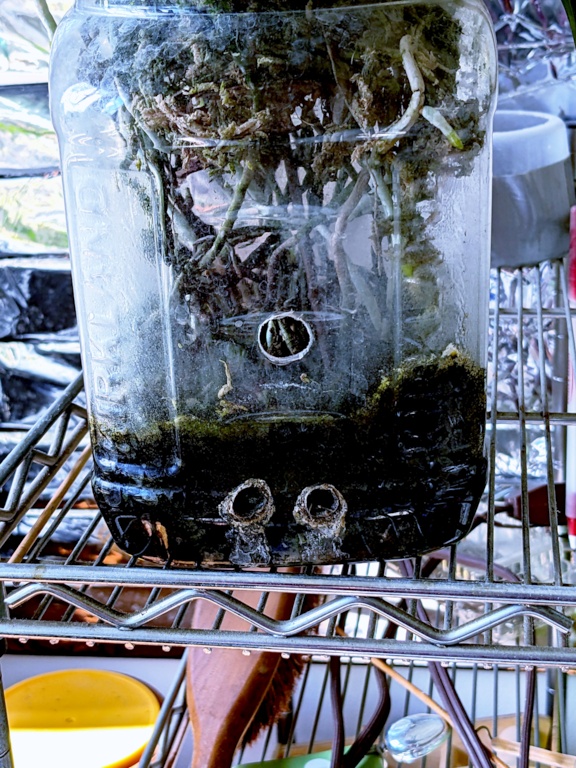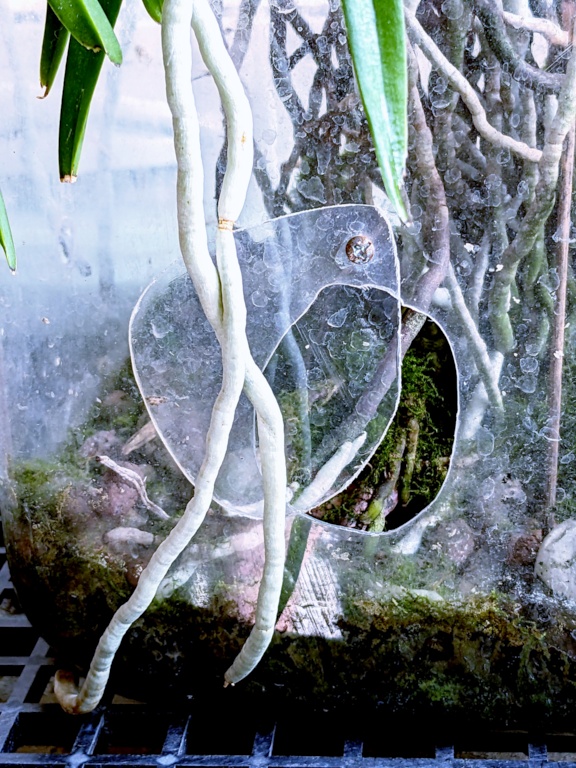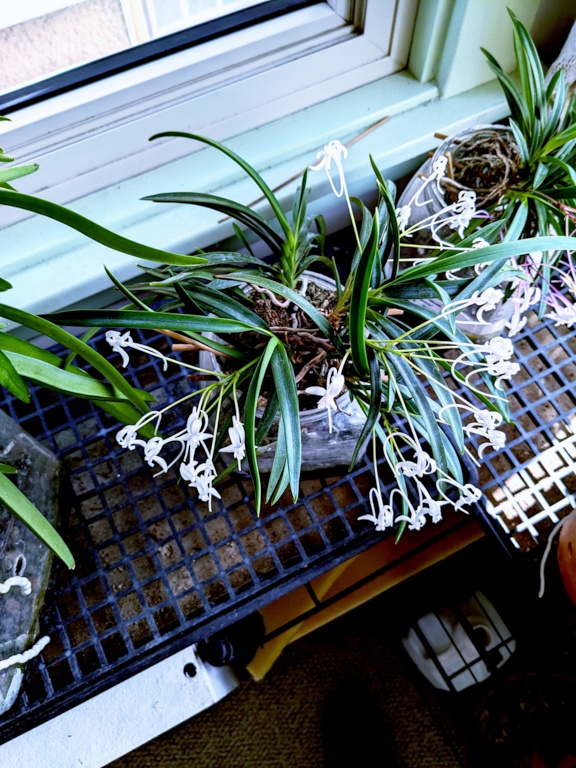In nature, you can find Neos growing on rock shelves or tree limbs with their long roots cascading downward. In greenhouses and on window sills, you can find Neos growing in sphagnum moss, bark, a mixture of both, or simply without a medium.
In Japan, they are grown in a mound of long-stranded sphagnum moss set in a Fuuran pot as shown at Orchids Limited / Orchid Web. Besides Fuuran pots, Neos are grown in ordinary clay pots as well as airy cedar baskets that permit Neo roots to cascade.
Cascading roots is what I have sought, so I’ve grown Neos in tall translucent plastic containers. The containers have wide openings where the orchid is supported by a “cradle” of soft copper wire; or on a “bed,” of wooden skewers attached to the container’s walls. Skewers are featured in the photo below.

I use the cutters of a Dremel rotary tool to form holes for: attachment of the wooden skewers, aeration along a container’s side, or drainage at the container’s bottom. The latter holes are very important! I usually place them about an inch from the container’s bottom.
I’ve additionally cut a small door for one of my large hybrids, a Neostylis Lou Sneary, so that I can best manipulate the large container’s contents. Please look at the photos below.



Optionally I’ve covered the wood skewers with moss, but I’ve always placed pebbles or LECA (light expanded clay aggregate) at the container’s bottom to retain water and maintain humidity.
I have tried different approaches to watering. Early in using these containers, I had allowed the water to remain at the container’s bottom in which case the amount of water was limited by the drainage holes.
For the past two years, my watering regimen has depended on a long wooden skewer. It extends from the top to the bottom of the container. When the tip of the skewer is near dry or the roots look dry then I pour water over the roots or just spray them. I then wait about 15 seconds and usually water again but now with a fertilizer solution at 1/4 the recommended strength. I then tip the container to drain the water. Worth noting, I’ve never let my Neos go dry for more than a few days.
Here in Milwaukee, Wisconsin, I keep my Neos in a west window and they do well. All have matured with multiple offsets. During the spring they produce multiple spikes.


By the way, you can find more information about caring for orchids at the websites of the American Orchid Society and the St. Augustine Orchid Society.
Please let me know how this page worked for you.
–Marshall Lev Dermer
Send mail to: marshall@dermer.com
1/20/2025